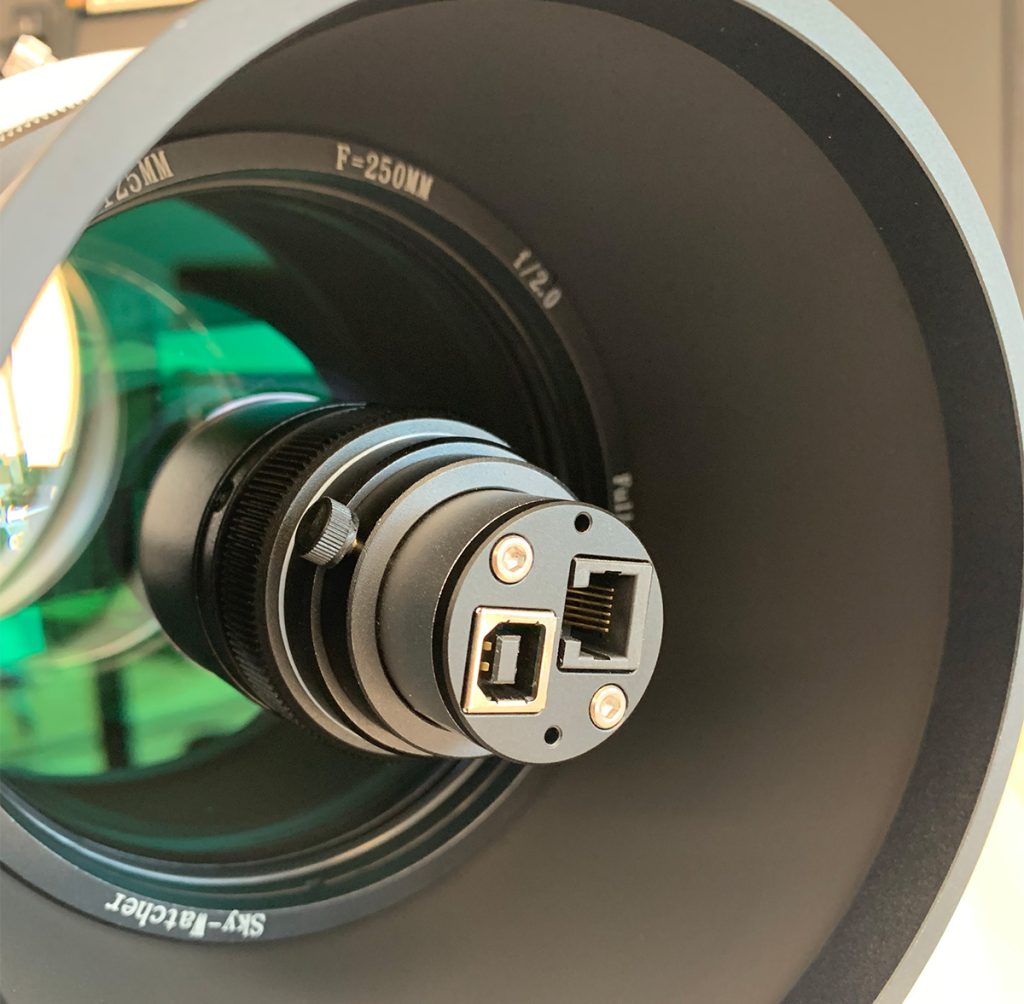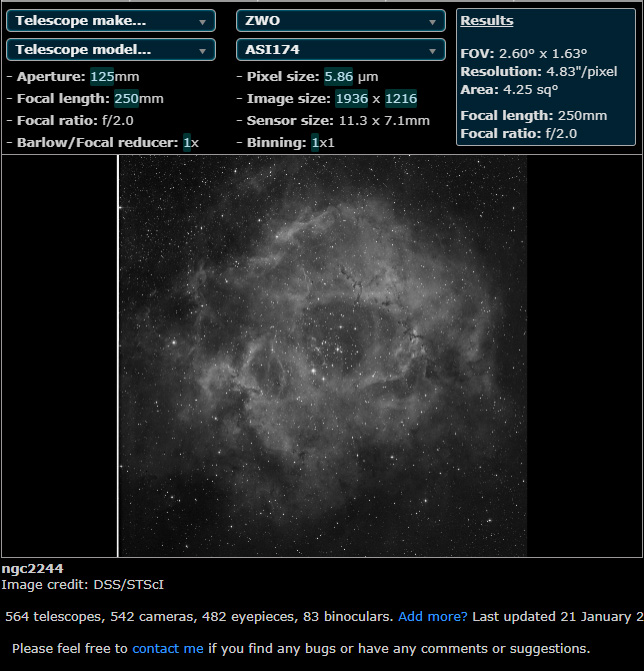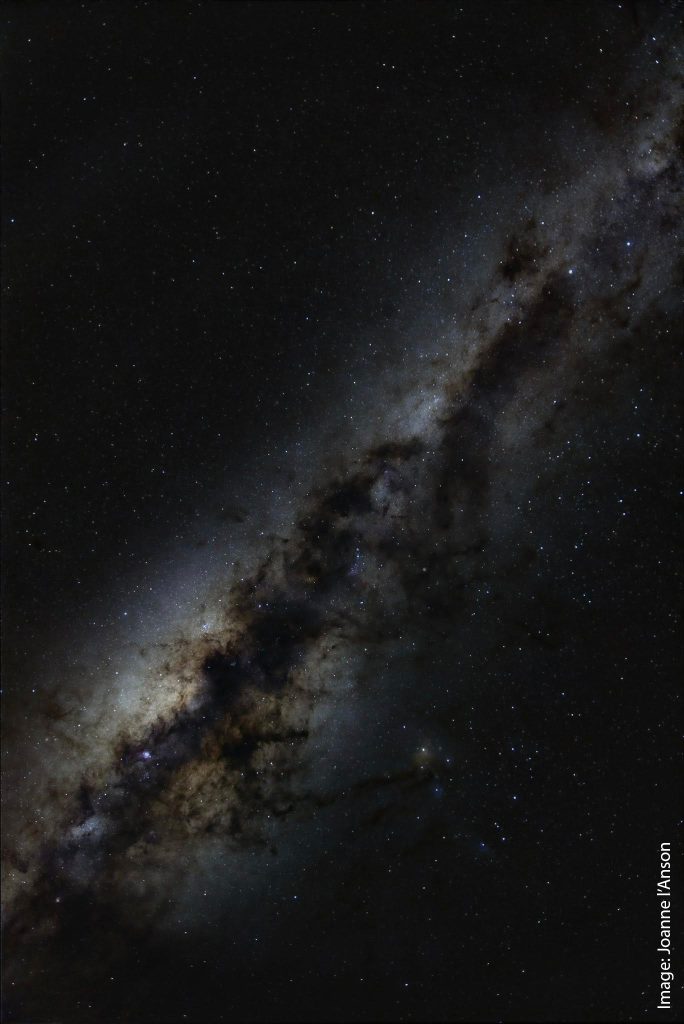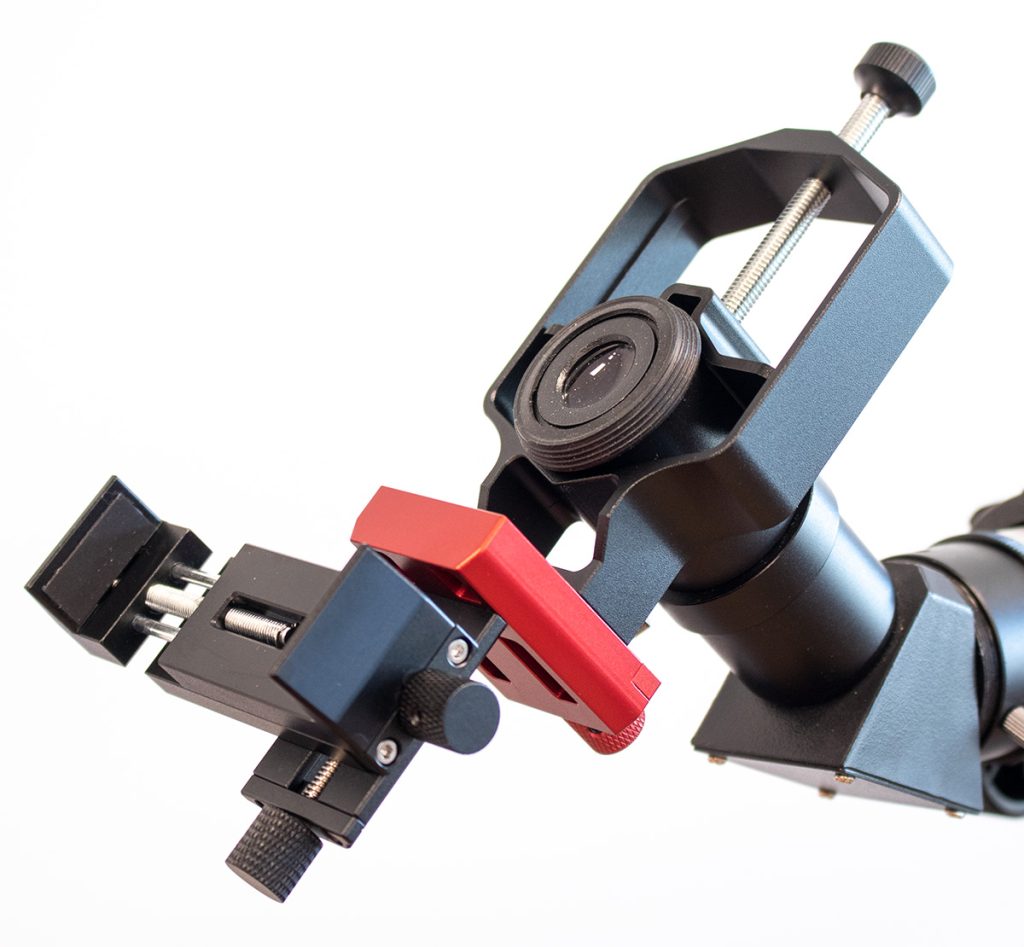We’ve been playing with a new telescope from Sky-Watcher that was delivered the other day. It’s a baby 5″ catadioptric telescope called a Sky-Watcher Honders Advanced Catadioptric Astrograph. What a mouthful. We’ll call it the HAC125.
Like a tiny RASA, it’s photographic only, and the camera sits in the middle of the corrector plate. And like a RASA, this thing is mind-blowingly fast, at f/2.

Our first impression was that this thing is absolutely tiny. Including the dew hood, it’s only 350mm long, and 3.75kg in weight. It was so small, we initially thought the box it came in was for other accessories! We put it onto a mount and pointed it out of the window.
During the day we weren’t going to get much, but we focused it on the Hume Freeway and found the image was quite acceptable through glass on a hot day. You can see it here without the dew hood. The camera cable snakes past the corrector plate, but if you put a nice curve on it, it won’t cause diffraction spikes.

For a bit more clarity we refocused it to a power pole on the far side of the road. (I think this power pole has been used so many times for test images that the Hume Council is considering charging us royalties.) While I was mucking about with the monochrome camera, two ravens came and perched right in the field.

In use
The HAC125 is designed to take a planetary camera with a 1.25″ barrel, and get deep sky objects. The idea here is that the slender camera out the front of the telescope won’t obscure the view too much. A big fat cooled camera isn’t a good idea here.
I did try a puck-shaped uncooled camera (my old ASI120MM), but I couldn’t get it to focus. The focal point is down in the focus tube a short way.
Another issue with having the camera on the corrector plate is that you have to physically put your hand in front of the scope to focus the camera. We thought this might have been a problem, but the focuser was actually very easy to use, moving smoothly to focus.
Perhaps my hand is oddly slender, but it didn’t darken the image much. During the night, you would probably have to use a bright star for focus, but we think it would be quite manageable. There might be a way of automating the focuser, but it would involve some surgery.

But I can hear you scratching your head now. A planetary camera with deep sky targets? Surely there’s not enough field of view? And how do you get a nebula to appear without really long exposures that would drown an uncooled planetary camera in noise?
To achieve this, Sky-Watcher is using a two pronged strategy.
Magnification? What magnification?
Remember that your field of view is dependent on two things: the sensor size of your camera and the focal length of your telescope. In most cases, planetary or guide cameras have small sensors, in the 3-4mm range. But the focal lengh of the HAC125 is a ridiculously short 250mm. This means that the magnification is going to be very low, so yes, maybe you can get DSOs in the field.
Let’s have a look at a couple of examples. I’m using the Rosette Nebula as an example, as that’s a large target.
Let’s see the field for a ZWO ASI120MM-mini guide camera. (I normally use this on-line simulator.) This has a sensor of 4.8 x 3.6mm, and the 250mm focal length gives you a field of view of 1.1° x 0.83°. This isn’t enough to get the Rosette in, although size-wise, there are lots of nebulas that will fit nicely. Of course, the 1280 x 960 pixels will mean you can’t zoom into the image much at all.

If you use an ASI174MM-mini instead you’ll get a field of 2.6° x 1.63°, because the sensor is larger at 11.3 x 7.1mm with a 13.3mm diagonal. The Rosette will fit on this quite nicely, and the higher resolution of 1936 x 1216 pixels will give a better overall image.
The exposure times for this setup will have to be very short. The IMX174 sensor has 5.86µm pixels which are huge, and combine this with an f/2 system, the image will develop very quickly. This combination of scope and camera is a very intriguing prospect!

So how big a sensor can you get on the HAC125? Sky-Watcher says the image circle (the usable area at the focus point) is 16mm in diameter. This suggests that the 174 is close to as large as you can go. A good colour camera for the scope would be the QHY 5III585C, with its 12.8mm diagonal.
The IMX533 is a sensor that I’d be keen to see, but I don’t think that sensor appears in any 1.25″ camera. If the telescope becomes popular, it might benefit a canny manufacturer to do that. Just imagine a QHY 5-III-533C.
Focal ratio
One of the most intriguing aspects of this telescope is its focal ratio. F/2 is fast – Formula 1 fast. The curvature on the primary mirror is seriously deep in relation to its diameter and those photons just flood in.
The effect of this is that your exposures won’t need to be long at all. They’ll finish before the noise builds up on the uncooled sensor.
Of course, another benefit of short exposures is that you won’t need to autoguide your mount. This is as long as your polar alignment is good, of course.
There are, however, disadvantages to a super-fast telescope. The critical focal zone (the range in which the focus is good) is very thin, because the light converges quickly. This means that focusing is going to be touchy. We did notice that the thread on the focuser has a fine (0.75mm) pitch, which has gone some way to address this. For the same reason, collimation will be just as touchy, meaning you’ll need a bit of practice.
Conclusion
So what’s the future? Is this the Next Big Thing (albeit very small), and about to replace the Quattro 150 as the new cheap fast imager? Will it mean the end of the expensive cooled camera?
I’m not able to make that judgement without more testing, I’m afraid. I intend to be doing that in the near future. I expect that others on the astronomy field will be interested by this weird little scope.
Another possible outcome is that this telescope is the first iteration. What comes next might be the game-changer.
Price-wise, the HAC125 is not much more than the Quattro 150, which has gathered a reputation as a useful grab-n-go scope, although the Quattro takes a bit of taming. For a similar sized package, which can go on an even smaller mount, the HAC125 might be really fun to muck around with, and a great use for that 174 camera that’s been sitting in a drawer!




